Airport Extreme (5th Gen) and Time Capsule (4th Gen) Review - Faster WiFi
by Brian Klug on August 5, 2011 10:22 PM EST- Posted in
- Mac
- Airport Extreme
- Time Capsule
- WiFi
Airport Utility and Network
The only remaining thing to go over is the Airport Utility and general network functionality. I’m not going to go into very much detail at all about the network side of things (routing performance, etc.) since honestly nothing has changed here—the board and SoC are the exact same.
To start, all configuration is done through Airport Utility on OS X and Windows. There’s no web-based portal like just about every other attached network device. On all of Apple’s WiFi products, Airport Utility is the exclusive point of configuration. It pops up a list of devices, including unconfigured ones without the need to connect over ethernet. Admittedly that’s a nice touch that makes configuration super easy.
There’s either the choice to have a wizard set everything up, or you can do it manually. The first page is summary, which lists some basic information, status, and high level information. Status mirrors the front panel LED which either glows green or amber depending on whether things are working fine.
For example, when the Time Capsule starts overheating the LED blinks amber and pops up an alert. The utility can also monitor for when problems happen.
The rest of configuration is honestly pretty straightforward. Each of the radios (2.4 and 5GHz) can be set to its own SSID, there are a wide selection of radio modes and the ability to set channels manually. As an aside, if you’re going to set the 5GHz channel manually, select one over 149 to get maximum power and avoid dynamic frequency selection chanels in the US.
There’s honestly everything you’d want from a consumer level router or wireless AP, and a couple of extras like RADIUS server support and guest network creation.
If you run the devices as a router, you can also port forward, configure the DHCP server (including static addresses assigned to specific MACs), and all the usual fixings. That said, some of the options are a bit barebones compared to more enthusiast open source packages, but it gets the job done.
In addition to sharing disks, the Airports can also share printers attached using USB. I’ve experimented around and even a USB hub plugged in with devices attached to it works, so you’re not limited to just a single port.
One of the features Airport Utility has that a lot of other consumer devices don’t is a nice way of viewing the status of attached wireless clients, including a little graph that continually tracks. The utility will show each client MAC address, signal, noise level, rate, and what network mode they’re using. It’s an incredibly useful diagnostic tool that’s honestly a step beyond what Tomato or even DD-WRT report for clients.
The Windows version of Airport Utility looks a bit like a program from the Windows XP days, which is about par but not unforgivable. Everything inside works the same way, except this version forgoes the client signal graph and instead just presents a table with data. You can still do everything else, however.
Update: Our own Saumitra Bhagwat pointed out to me that on iOS 5 Beta, you can actually use an Airport Utility (lite) built into the WiFi settings page to configure a new Airport Extreme or Time Capsule. You have to be in the initial setup state (reset completely to defaults) to see it, but when in range, a "setup an airport base station" window appears, allowing this lite level of configuration. Depending on your existing setup, it'll offer some suggestions as well (for example, as I'm attached to a current Extreme, it offers to extend by default).
Another small but useful thing is that both devices support SNMP, so you can do stuff like track traffic on all the internal interfaces on the device using software like MRTG or Cacti (both of which I’m a huge fan of). There’s even a MIB for how many wireless clients are joined. If you’re not into using SNMP yourself, there’s a simple utility out there called Airport Flow that gives you a per-interface graph and the total number of clients attached.
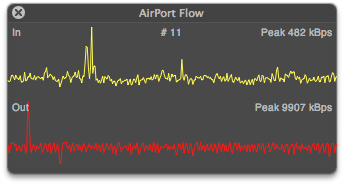
You need to specify the device IP address and what interface to monitor, so you might have to snmpwalk the airport (snmpwalk -c public [ip addy]) and look for the line with each interface name:
IF-MIB::ifDescr.1 = STRING: mgi0IF-MIB::ifDescr.2 = STRING: mgi1IF-MIB::ifDescr.3 = STRING: bwl0IF-MIB::ifDescr.4 = STRING: bwl1IF-MIB::ifDescr.5 = STRING: lo0IF-MIB::ifDescr.6 = STRING: wlan0IF-MIB::ifDescr.7 = STRING: wlan1IF-MIB::ifDescr.8 = STRING: bridge0
But there’s nothing complicated about that.
Honestly, for routing and firewall, the Time Capsule and Airport Extreme get the job done but without much flair or ability to tweak low level things like I’d like to see. I generally use either a pfSense embedded x86 box, WRT54G-TM running Tomato, or a WRT-600 running DD-WRT for NAT routing, firewall, and DHCP myself, just because those options offer a ton of fine grained control over the network side, and then an Airport Extreme for WLAN. That said, the Time Capsule or Airport Extreme can do all of that in one box.


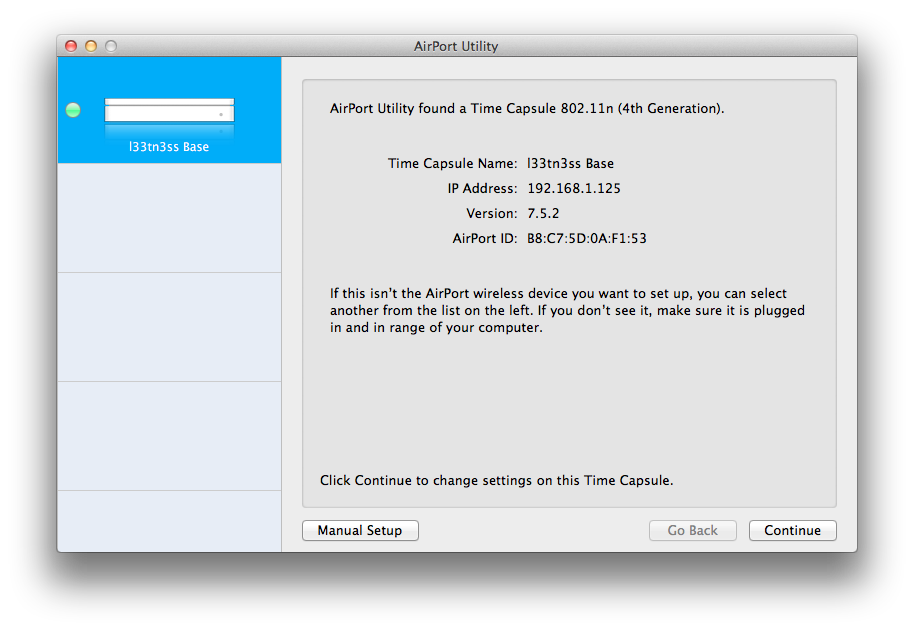
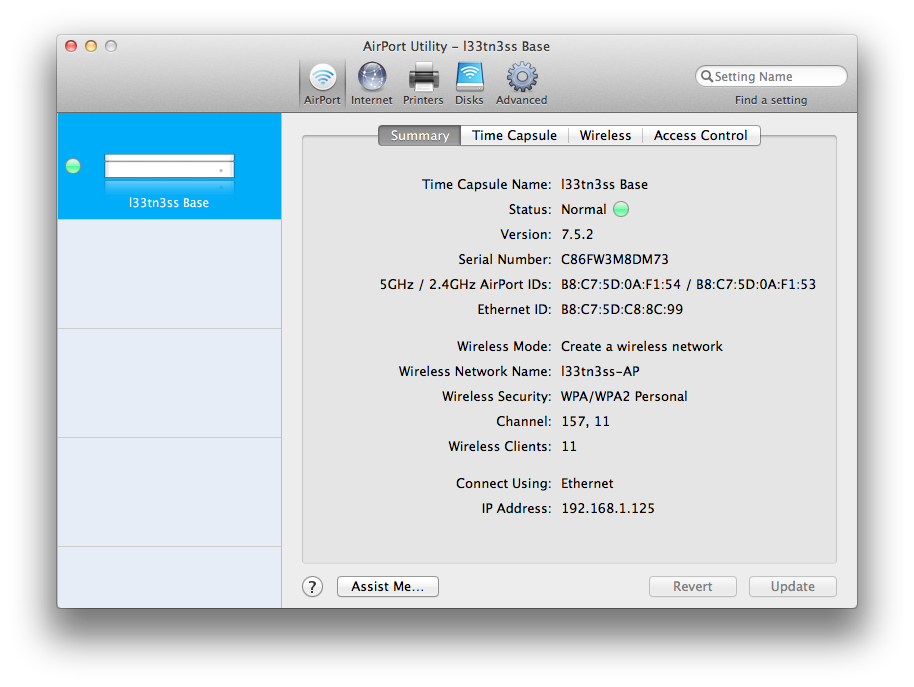
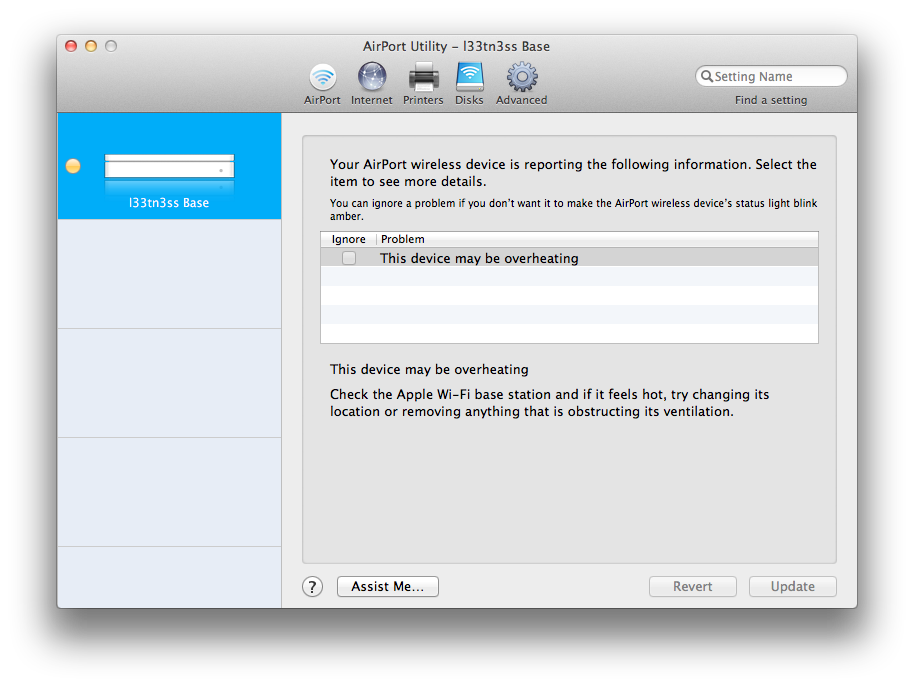
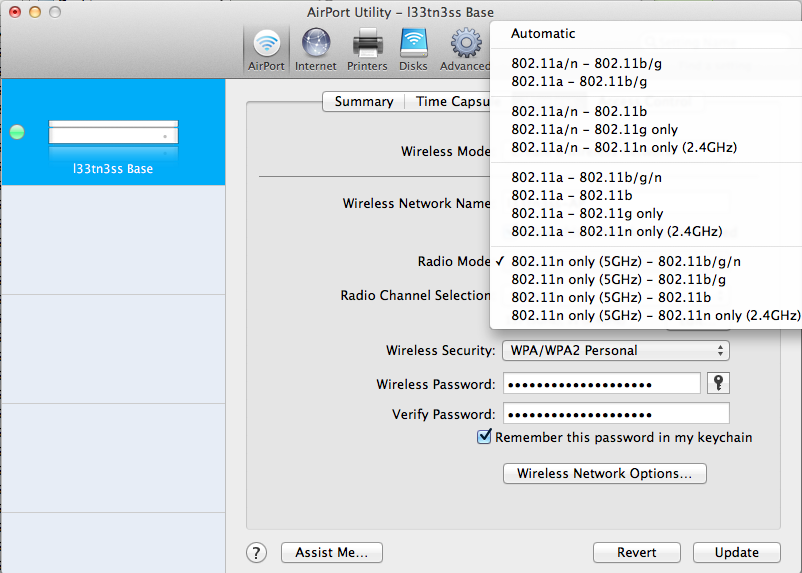
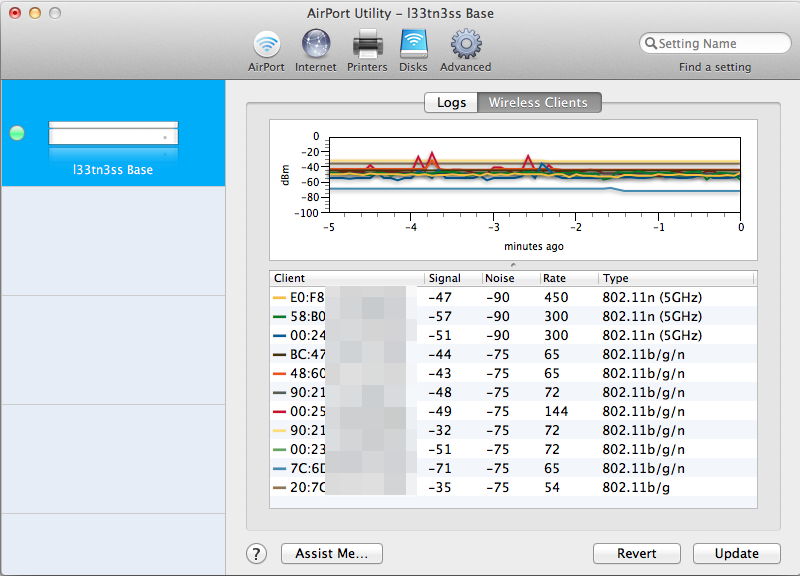


























90 Comments
View All Comments
Jacob Marley - Saturday, August 6, 2011 - link
On page 3..."Marvell 88E6350R 7 port GigE switch, with 5 physical interfaces, all of which support up to 10 KByte jumbo frames."
So the hardware supports jumbo frames, but does the software?
I have yet to find a home router that supports and enables jumbo frames at the switch level.
Jumbo frames make no difference for internet bound traffic but it seems to make a big difference for LAN based large data transfers.
jay2901 - Saturday, August 6, 2011 - link
brian,why do you use a separate box for nat? better firewall? curious as to what that device is...
thanks.
Brian Klug - Sunday, August 7, 2011 - link
I prefer the wealth of configuration options that going that route provides. Specifically software like Tomato, DD-WRT, or if you're really feeling daring, a FreeBSD based solution with a PHP wrapper like m0n0wall or pfSense.Just a ton more options for firewall, reporting, bandwidth tracking, QoS, e.t.c.
-Brian
danacee - Saturday, August 6, 2011 - link
Use D-link, or if you really have to Netgear.. Although only D-link I know for sure makes 5/2.4ghz N routers that never EVER have to reset and run for years. Netgear I've only seen that sort of reliability with their Wireless G routersLinksys is rotten filthy garbage just like everything else Cisco makes, avoid it. They've not made a single wireless router in the past 2 years that doesn't shit itself and need a reset nearly every day.
-Your helpful networking tech.
thingi - Sunday, August 7, 2011 - link
Apple infuriate me sometimes. It would appear that the 'new' time capsule still can't join a wireless network without it's Ethernet ports becoming being disabled if nothing has changed apart from the wifi card :-(My iPhone is my only source of net connection which is 80Gb (yes thats eight-zero gigabytes) of 'fair usage' per month which is oodles for a 3G connection so here's what I want to do:-
'iPhone Personal Hotspot' > Time Capsule > Airport Express (wifi-to-eth) > xbox
The trouble is that when a time capsule joins a network it's ethernet ports fall asleep. So instead I have to do the following:-
'iPhone Personal Hotspot' > Airport Express (wfi-to-eth) > Time Capsule > 2nd Airport Express (wfi-to-eth) > xbox.
The really stupid thing is that a Time Capsule is more powerful piece of network equipment than an airport express, there is no reason why the ethernet ports should fall asleep just because Apple have deemed that users must connect a Time Capsule directly with an iPhone personal hotspot without crippling it.
The other slightly annoying thing about this setup is that Apple in their infinite wisdom have deemed to force iPhone personal hotspots to set up a 'g' connection instead of an 'n' one (ok it would still be an 2.4Ghz due to the iPhone radio but that would be better than being stuck at 'g' for no good reason in a totally 'g' saturated neighbourhood!
thingi
repoman27 - Monday, August 8, 2011 - link
When you tell an AirPort Express / Extreme or Time Capsule to "Join a wireless network" it becomes a client on that network and ceases to perform as a router. This is really only useful to share attached USB or audio devices wirelessly.When you enable Personal Hotspot on an iPhone 4, it creates a wireless network (802.11n (b/g compatible), 2.4 GHz band, single spatial stream, WPA encryption) and provides DHCP and NAT to share your cellular internet connection. 802.11n connections are actually possible according to this article: http://www.anandtech.com/show/4163/verizon-iphone-... but if you're in a neighborhood where 2.4 GHz is saturated, as many are, there's not much you can do about it. Not many phones have 5 GHz WiFi radios these days.
If you just want to provide an internet connection for your Xbox, the simplest solution is to buy a WiFi adapter for it and configure that to connect to your iPhone's Personal Hotspot. In order to bridge your Personal Hotspot to your wired network, you would have to set your Time Capsule's Internet Connection: Connection Sharing setting to "Off (Bridge Mode)", set the Wireless: Wireless Mode setting to "Extend a wireless network", and then choose your Personal Hotspot as the network to extend. For various reasons, I'm going to guess that this will never work though. Besides, the iPhone Personal Hotspot only supports a maximum of 3 (GSM models) or 5 (CDMA models) clients via WiFi, so you can't really have much else on your LAN unless you put it behind yet another router.
It might be easier to tether your iPhone via USB to a Mac or PC, turn on internet connection sharing over the ethernet adapter, and then connect that to a Time Capsule set to bridge mode.
ginghus_khan2000 - Sunday, August 7, 2011 - link
I was a little surprised you didn't test the wifi and hard drives as a system. I'm sure the wifi is the limiting protocol here but there were a few spots where wifi would be faster than the hard drives.stephenbrooks - Sunday, August 7, 2011 - link
Can you stack the two Airport Extremes on their side and put the Time Capsule across the top?Brian Klug - Sunday, August 7, 2011 - link
Wow, that's an awesome idea. I'm going to see if I can set it up ;)-Brian
deadshort - Sunday, August 7, 2011 - link
Fantastic: thanks for doing that! Spread the word!If the main motherboard and chipset are the same, I guess it stands to reason that a more powerful radio would take a bit more power. ~250 Wh/day, or about 5% of my fairly careless daily consumption, is worth knowing but not worrying about.